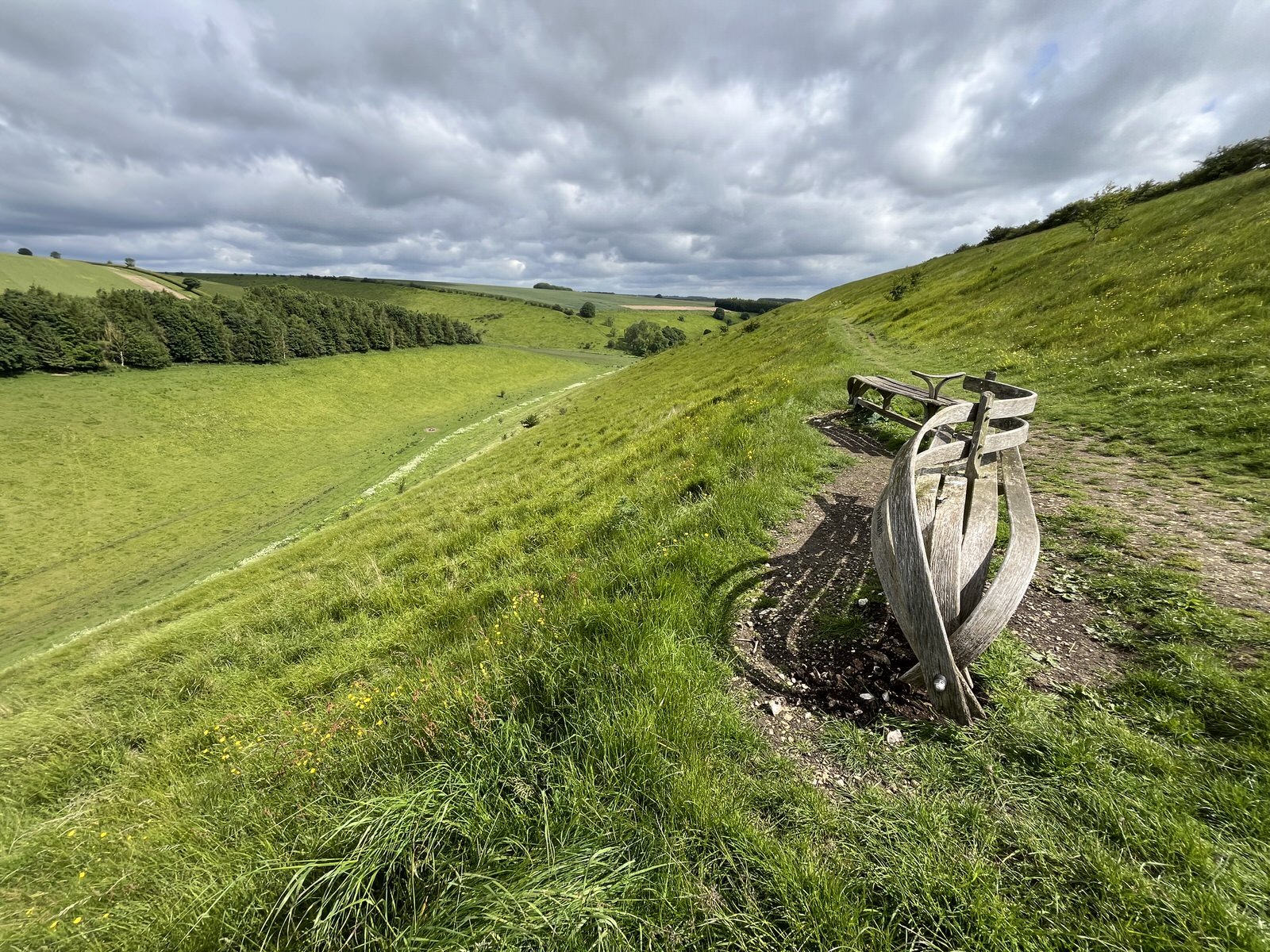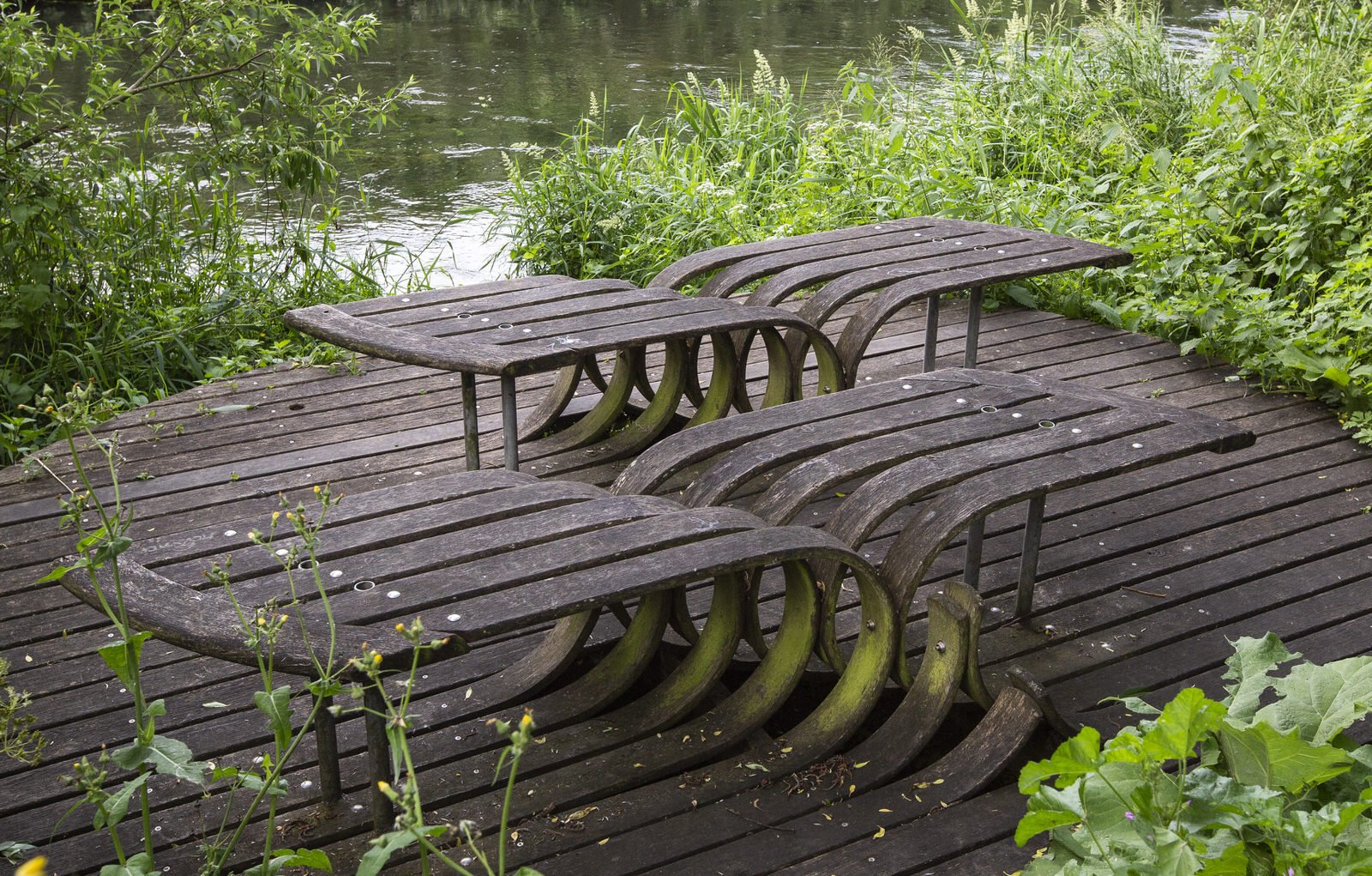How long does our garden furniture last?
We are often asked about the longevity of our solid oak garden furniture. The short answer is - it depends! It is hard to be precise because oak is a natural material that reacts to the environmental conditions, and these vary widely. Our British native oak tree, Quercus robur, has very high levels of tannin that make the timber very durable. Indoor British oak furniture kept in a well ventilated house, could last for centuries. Outdoor British oak furniture situated in a well ventilated location, should last for decades. The oak we use is Quercus robur from Perthshire and is durable situated outside without paints, stains or preservatives. Unlike soft woods, that rely on the application, and regular re-application, of protective products. A lot of furniture called ‘oak’ is not Quercus robur. The word ‘oak’ is like ‘beef’ and is not protected.
Over time the appearance of our exterior oak furniture will change. The colour changes to silvery grey (darker when wet) and the surface becomes textured and worn. The wood continues to expand and contract and move as a result of changing humidity in the environment. At times you may also see tiny cracks on the surface of the timber but none of these changes mean the wood is weakening, rather it is a superficial change in appearance of the surface which is stable after a few years.
Recently we had a chance to closely inspect some exterior benches after thirteen years of weathering and no maintenance. In 2011 we were commissioned to design, make, and install a series of bespoke benches for the Wolds Way. This eighty mile national trail wends through a relatively dry chalk landscape in East Yorkshire. Angus designed a family of benches called the Spring Benches (nominated for The Woods Awards UK in 2011 and admired in BBC Yorkshire Wolds Way TV series in 2017). The image above shows a Spring Bench on the Wolds Way in 2024 and the image below shows a Spring Bench above Millington soon after installation in 2011. The thirteen year old bench (above) has a weathered silver appearance with a textured surface. The ends of some of the slats look ragged. The new bench (below) is pale and smooth.
Spring Benches, Yorkshire Wolds Way 2011
Earlier this year (2024) Angus and Mike went back to do some maintenance. The benches were scraped clean and any soil and grass covering the wooden slats was dug out and removed. If the wood is permanently damp and in contact with soil it will bio-degrade (rot) like a fallen tree branch on a woodland floor.
Clearing grass and soil away from end of steambent oak slats.
A couple of damaged slats were replaced and this gave us a chance to really inspect the wood. When we cut a section through the slat we can see that the exposed top surface is very textured and eroded. However most of the interior wood fibres remain intact and the slat is still functionally strong. The underneath surface which has had less exposure to weather and light, has no damage.
Cut slat after thirteen years outside with no maintenance.
The environment has a huge impact on the appearance of exterior oak over time. The surface may become covered with various species of lichen - the same ones are found on trees in your area, and these can be brushed off. Dirt can be washed off with warm soapy water and a vegetable scrubbing brush. Light and insects such as wasps may attack the surface and the softer lignum is eaten away but the harder fibres remain creating a textured surface over time. However the deeper wood remains strong and continues to function effectively.
Another exterior public art commission was the Sculptural Fishing Platforms. There were part of a project by Canterbury Council to improve a footpath alongside the River Stour. Angus designed a family of sculptural fishing platforms and these were designed, made and installed in 2011. Time and environmental conditions has impacted their appearance.
When installed the oak was pale and sanded smooth (above). By the time they were photographed in 2023 (by Tim Rebeiro for Art Mag) they are dark grey with lichen growing in the shaded areas (below). This is a damp location with overhanging trees and debris and dirt has built up on the surface over time. However they remain structurally and functionally sound. The platforms could be scrubbed and washed to bring the surface back to a lighter pale slivery grey. Scrubbing and washing the surface will not damage the integrity of oak.
Sculptural Fishing Platform, Canterbury 2023
When we deliver garden furniture it will be pale, sanded wood. Initially this darkens and some tannin will leach out (like tea stains) but rain washes the tannin away and the surface of the wood will weather to silvery grey. The process takes months or years depending on the amount of sunlight and rain. More exposed surfaces weather more quickly.
There are conditions which will cause oak to rot. If the wood is constantly damp, for example if it is covered with plants or becomes buried in grass, the wood will bio-degrade. So we suggest that exterior furniture is always sited where it can dry out between rain and that there is plenty of room for air to circulate. Prevent the feet of legs becoming buried in soil by placing them on gravel, paving or stone.
Our ‘floating garden benches’ like the Kenmore Bench or the Garth Bench have deep oak posts buried in the ground and the seat are attached to them. The posts are thick and can be expected to last for decades despite being in contact with soil, however it is important to keep surrounding grass and plants away from the thinner seat and back slats.
We have installed Kenmore Memorial Benches on various hillsides in Scotland during the last five years and all are doing well.
The weakest part of all oak furniture is the joints, and this also applies to garden furniture. When Angus is designing he minimises the number of joints and our steam-bending process is ideal to create interesting functional, flowing forms, with minimal numbers of joints. Where there are joints, we anticipate how the wood will continue to move with changing humidity, and use traditional hand-cut cabinet making joints reinforced with wooden dowels. When appropriate we also use high quality stainless steel fixings in garden furniture.
Dalerb Garden Dining Set with round table and four chairs.
Caring for our oak garden furniture
Ensure that air can circulate around the furniture at all times so keep nearby plants and grass cut back.
Place wooden feet on stone or gravel.
Clear off debris by brushing with stiff brush.
Wash off dirt, moss and lichen and bird droppings with warm soapy water and a cloth, or stiff scrubbing brush, and then rinse with clean water. A vegetable brush and natural washing up bar is ideal for cleaning garden furniture.
In very exposed locations (especially where they may be freeze-thaw conditions) we recommend protecting garden furniture during the winter, and we can provide customised covers.










